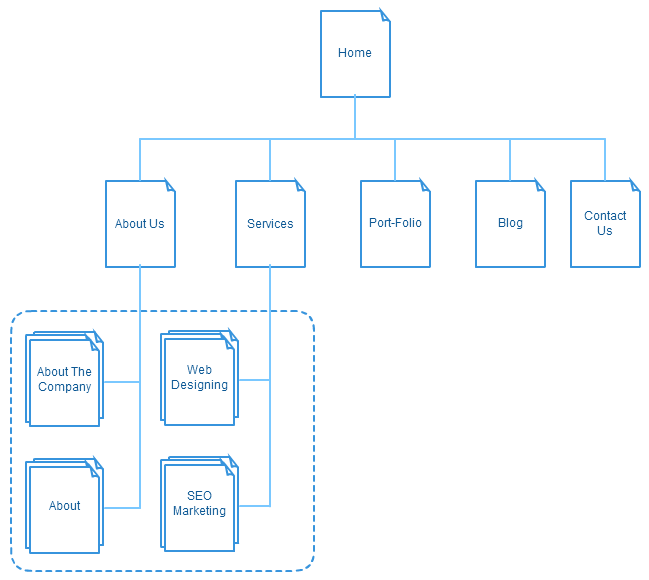Planning a Website with Sitemaps
When you want to build a website, the first thing that you should worry about is its structure. Depending on the structure of a website; the budget, duration, implementation and even the programming language that is used to create the website will be decided.
When creating a website structure, there are few things you should be looking into. They are;
1. The type of the website
2. Number of Pages
3. Content Scope
4. Linking Strategy
5. Marketing Plan
Type of the Website
There are many types of website on the market. Whether it’s your personal website or the business website, you should understand the basic role of your website. If it is a personal website, having few pages is enough. Self-marketing websites doesn’t need pages more than 5. There should be a home page, about page portfolio page (if you have any), a contact page and your blog page. This web site is suitable as a static website. The meaning of a static website is the changes to the content is not done frequently or will not be done by the front end user. Small business website can also be static, but preferably it is better to use dynamic websites for businesses. If you intend to market products, you should have all the products in your website. In some cases you cannot think about the number of pages in the website. In this scenario, it is best to use a dynamic website as the content should be changed rapidly. This applies to news and forum websites as well.
Number of Pages
When planning your website, another most important factor is the size of the website. The size can be varied according to your requirement. As I mentioned earlier, if you are into self-marketing where you need to market yourself, 5 page website will be enough. For the content that you need to change or to provide updates to your fan base, you can use a blog template. If you use a blog you do not have to worry about the number of pages as it’s not static. It is very important to get this point clarified before moving into the next stage. You should clearly identify the set of pages that you need for your website and get them documented to move forward.
Content Scope
After determining the type and the size of the website the next most urgent task to do is to find the content scope for your website. Content is the most important factor that drives modern websites. These contents will be in the form of Text, Images, Audio, Videos or even flash games. You need to fill your pages with the content types mentioned above. First off, if you write the content by yourself, make sure you have a plan to distribute them among the pages you have identified on your website. If you cannot create content by yourself, hire someone online and get your content done professionally. Business / Company profiles can be very content oriented as there are many users who will read about/ about us pages. Portfolio page is another good content example, as you can categorize the previous work you have done. Keep your home page clean and put some critical attractive information for the home page to keep your visitors alive. The spreading of your content can keep your visitors busy while you are reaching your ultimate goal.
Linking Strategy
The visitors, who visit your website by your paid marketing or thought Google organic search, should be able to navigate through your website. If your home page doesn’t link to other pages in your website properly, the visitors will be lost and will not show up again in your website. Even though you have got your content straight up the linking strategy comes critical when you want to navigate your users through the pages of your website. Remember that people are in a hurry to find what they are looking for. It is your duty to give them what they need instantly. Otherwise, they will leave your website after getting lost on the page that you have not properly managed. Inbound links are much more important as outbound links. The best practices are to create links between every page (will be illustrated in the sitemap) and to create reference links for whatever you referred to your website.
Marketing Plan
A modern website is not just an informative showcase. It is a marketing plan that takes effect your business or personal web site. In a business website you should be able to convert the visitor to a customer after navigating through your website. Your ultimate goal should be to make revenue from the website. If your website is a personal / self-marketing website It is clear that you want visitors to become your fans. That should be your main goal. Make a plan through the website for that to happen. For an example, if you are an artist with exceptional skills, post your paintings online and engage your fans to share them, like your profile, etc. Make a proper goal and drive your visitors around in with a proper plan.
Everything discussed in this article can be planned out by a sitemap. Web site maps are the blueprint of any website. Creating a website map prior to designing a website is important as the basic structure and many other details are carried out by a website map. Let’s take an example of a simple sitemap of a simple website.
As you can see the internal linking structure of the website is shown in the Sitemap. The specialty of sitemap is that is shows all the pages and how they are linked as well. Use site maps to plan your website properly.

